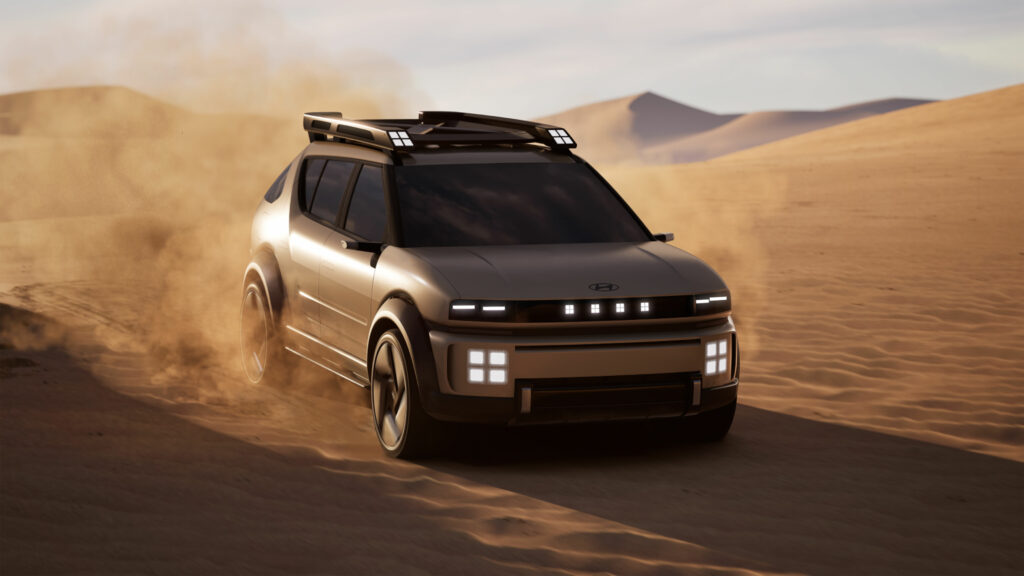
Hyundai (005380.KS) isn’t just skimming the surface with the Initium—it’s aiming to create a hydrogen-powered flagship that could make fuel cell EVs (FCEVs) a realistic, everyday choice. Positioned as a successor to Hyundai’s Nexo, the Initium concept not only pushes fuel cell technology forward but also reveals Hyundai’s deep commitment to hydrogen.
Set to debut at both the Los Angeles Auto Show and Auto Guangzhou, this SUV takes on a design language Hyundai is calling the “Art of Steel” and aims to establish hydrogen as a practical and powerful alternative in the EV market.
Art of Steel: Blending Rugged and Refined
One look at the Initium, and it’s clear Hyundai has gone for a bold, sturdy look, reflecting the material power of steel with a modern, urban twist. Blocky, robust fenders give the Initium a rugged stance, while accents of golden steel add an element of refined strength.
Hyundai’s parametric pixel lights are cleverly integrated into the headlights and taillights, creating a visually cohesive link with the Ioniq EV series, while the Initium’s overall look stands apart with an adventurous yet polished vibe.
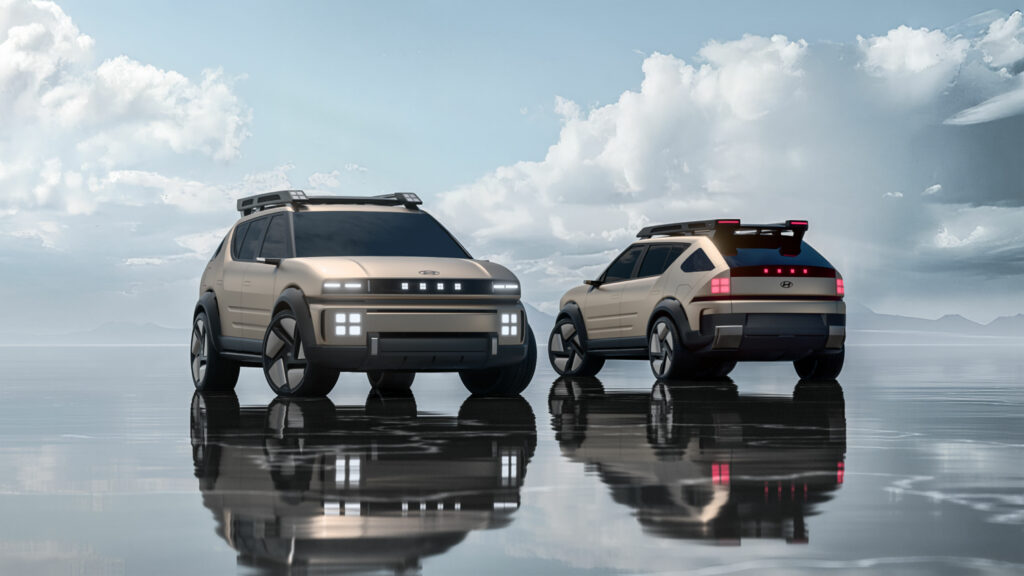
And Hyundai didn’t skimp on functionality either. The roof rack is as practical as it is stylish, with built-in lighting that not only adds character but also aids visibility in low-light outdoor environments. The 21-inch wheels are designed with aerodynamics in mind, wrapped in low-rolling-resistance tires to maximize the Initium’s driving range.
SangYup Lee, Hyundai’s design head, calls this approach a blend of “rugged elegance” that speaks to Hyundai’s vision of an urban/off-road hybrid, built with the flexibility for both city drives and weekend getaways.
A History of Hydrogen Innovation
Hyundai’s journey in hydrogen isn’t new. It all started with projects like the Mercury Project, designed to accelerate Hyundai’s FCEV technology in the early 2000s, which led to breakthroughs in fuel cell stacks. By 2013, Hyundai’s Tucson FCEV debuted as the first of its kind, laying the foundation for the Nexo in 2018, which pushed fuel cell technology further with improved power density and durability.
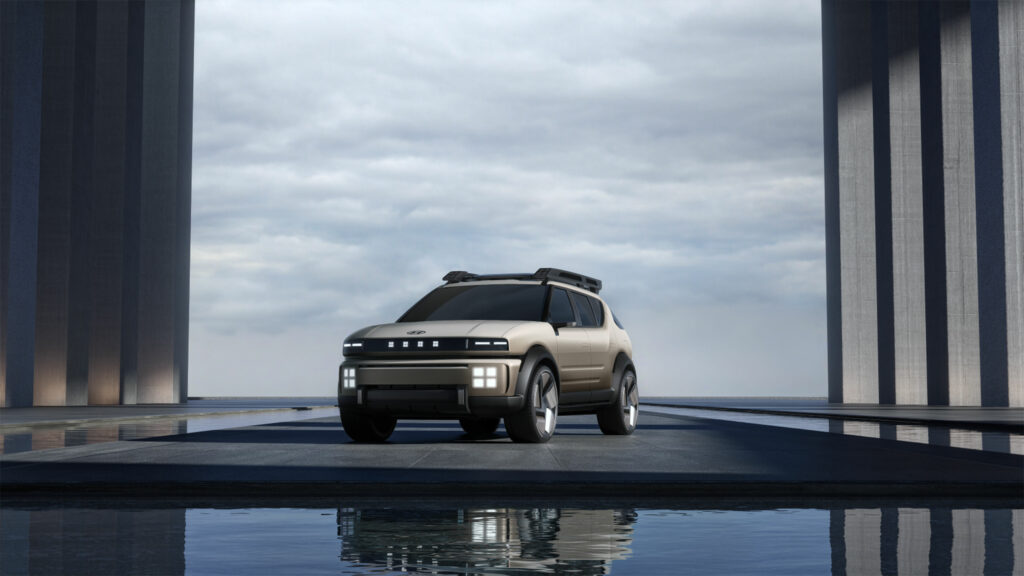
The Initium’s third-generation fuel cell stack takes this legacy forward, improving on the Nexo’s design with an anticipated 40% increase in durability and a target power density significantly higher than its predecessors.
With an electric motor output of 150 kW and an expected range of over 400 miles per tank, Hyundai aims to make the Initium competitive with battery EVs. This step is particularly important as the automaker shifts its focus towards hydrogen, positioning the Initium as a flagship model within Hyundai’s HTWO, a division dedicated to hydrogen innovation and development.
Hyundai’s CEO, Jaehoon Chang, sees hydrogen as a “cleaner, quieter, and safer” alternative that can adapt to a range of uses—from cars to heavy-duty vehicles—without compromising on performance or practicality.
Engineering That Prioritizes Efficiency and Power
The Initium isn’t just about good looks; it’s built for serious performance. Hyundai’s engineers have worked to optimize both acceleration and range, with the Initium’s large hydrogen tanks paired with low-rolling-resistance tires.
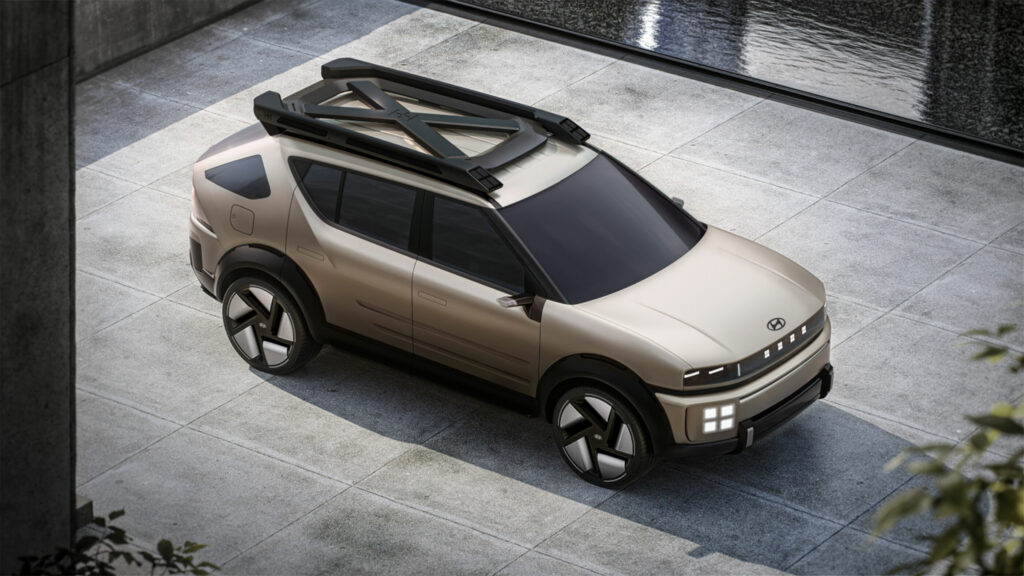
Compared to the Nexo, the Initium has a quicker acceleration, achieving 0 to 100 km/h in just 8 seconds, along with a responsive highway passing speed of 6 seconds from 80 to 120 km/h. Hyundai’s claim of “outstanding acceleration” compared to other FCEVs positions the Initium as a standout in a market where speed isn’t often prioritized.
Hyundai has also incorporated V2L (vehicle-to-load) and V2H (vehicle-to-home) capabilities into the Initium, allowing it to provide offboard power up to 100 kWh—enough to power an average home for up to 10 days. This feature aligns with Hyundai’s vision for a more integrated hydrogen ecosystem, where vehicles can be as much a power source as they are a means of transport.
Addressing Infrastructure Challenges: A Smarter Hydrogen Experience
One of the biggest challenges for FCEVs is the lack of widespread refueling stations. Hyundai has tried to offset this with an innovative FCEV-specific route planner, which allows drivers to find hydrogen stations along their routes without added stress. The system tracks station availability, operational status, and even real-time wait times.
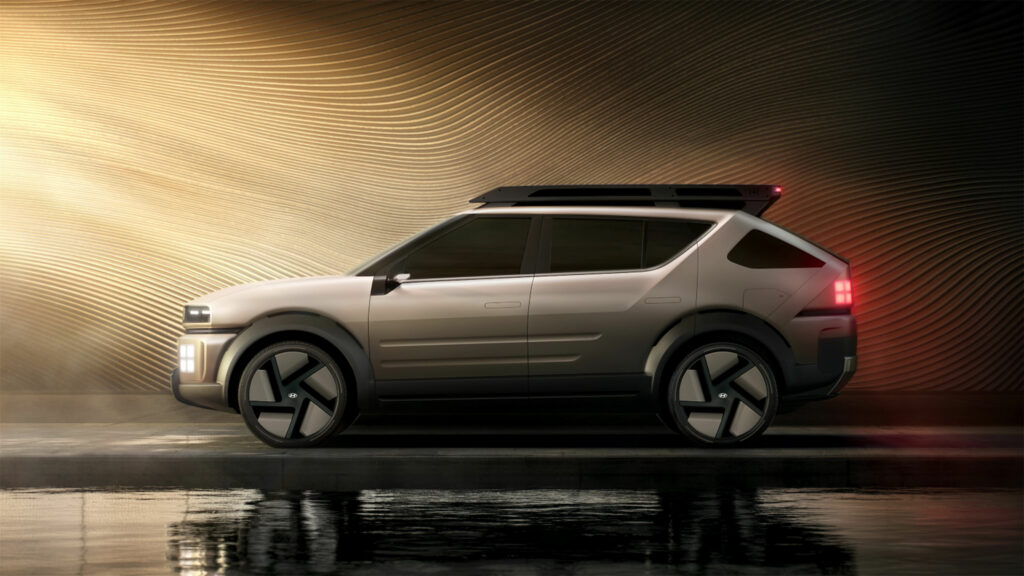
In South Korea, where there are around 200 stations, this is feasible; the challenge, however, will be expanding this in other markets. For buyers in regions with less infrastructure, Hyundai’s navigation tech could be a game-changer in minimizing range anxiety and encouraging the adoption of hydrogen.
A Sustainable Future Fueled by Hydrogen
Hyundai has made it clear that its commitment to hydrogen extends beyond vehicles, envisioning a future where hydrogen supports sustainable infrastructure at large. The Initium’s release is a stepping stone towards this broader goal, promoting hydrogen as a clean, accessible energy source with applications far beyond transportation.
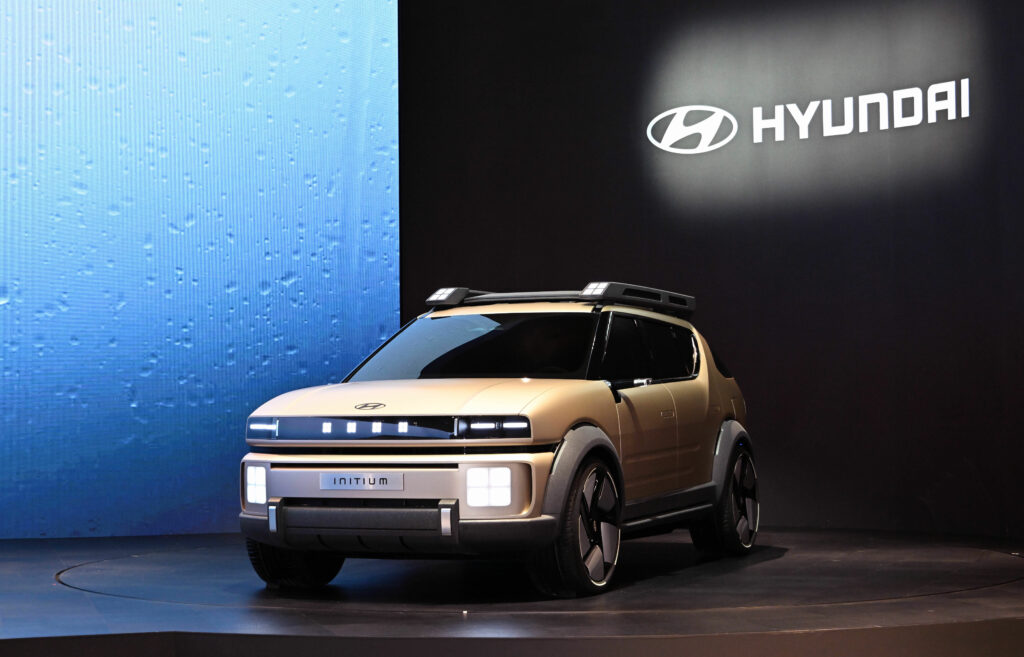
Hyundai Motor Group’s executive chair, Euisun Chung, highlighted this vision at CES 2024 with the launch of HTWO Grid, Hyundai’s end-to-end hydrogen energy solution that spans production, storage, and utilization.
Charge Complete: The Path Ahead for Hyundai and Hydrogen
With the Initium, Hyundai is doubling down on hydrogen as a core component of its future fleet. While battery EVs may dominate the market for now, Hyundai is positioning the Initium as a real-world alternative that balances performance, range, and eco-conscious engineering.
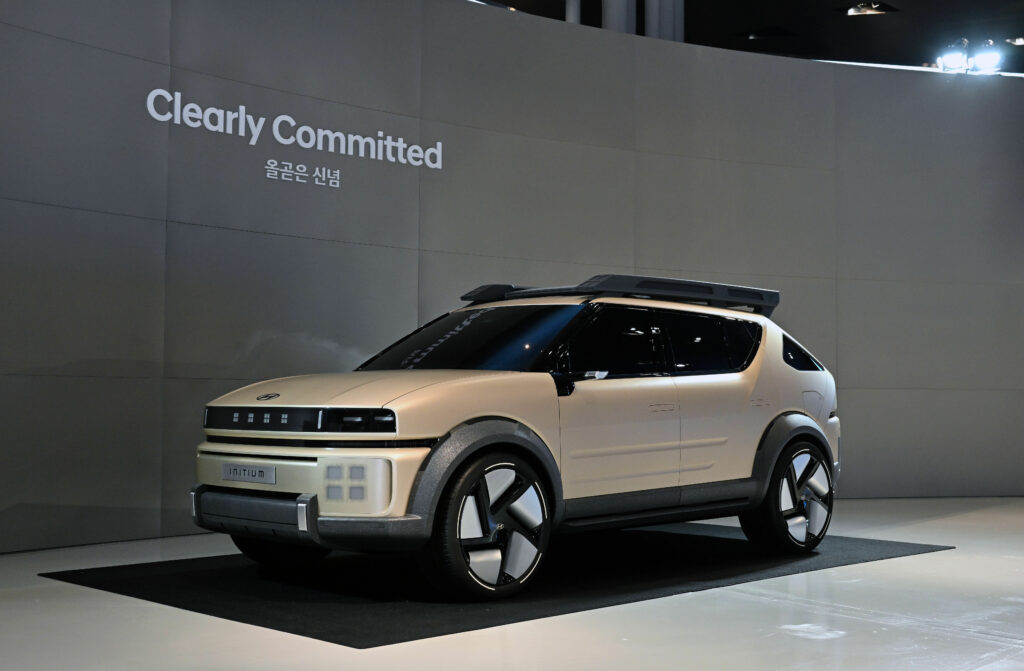
The true test for the Initium and FCEVs as a whole will be in infrastructure expansion, but Hyundai’s commitment to this ecosystem—from hydrogen stations to V2L and V2H technology—signals they’re serious about making hydrogen work. The question is, will the market be ready to meet them?





Please *stop* with this utter stupidity! Even *if* (and that is a *very* big ‘if’) we could get a fuel cell system that worked *reliably* and did not cost ten’s of thousands (pick your currency), you still have the huge problems of:
1/ *Where do you get the H2*?
2/ *How do you transport it safely and efficiently*?
3/ *How do you deal with the fact that it leaks so easily* both from a filling station, transportation and vehicle storage basis?
4/ If you make H2 from hydrolysing water (as most people who think ‘the hydrogen economy’ is the best thing since sliced bread imagine it is going to come from), *where* are you going to get all the *ultra-pure* water needed (1kg of H2 (~70 miles of range in an average-sized car) requires 8-9 litres of water)? Half the planet hasn’t got enough for basic living needs as it is! If you use sea water, what are you going to do with all the saline left over?
5/, 6/, 7/, 8/… the list goes on and on!
There is simply no way all these fundamental issues are going to be resolved before battery technology advance make the whole H2 question completely redundant.
Just *STOP*!!!